Omnichannel marketing is a strategy that requires brands to interact with their audiences across multiple online and offline channels, providing a consistent shopping experience. These channels include social media, websites, apps, email campaigns, chatbots, web push notifications, stores, events, and other means that can guide customers through their buyer journey. Omnichannel marketing helps brands gain customer loyalty, establish brand recognition, provide a personalized experience, reduce customer churn, and boost sales.
In this article, we’ll review the importance and benefits of omnichannel marketing and get to know the difference between omnichannel and multichannel strategies. Next, we’ll find out how to create an omnichannel strategy with SendPulse and grab some inspiration from our outstanding examples.
Why is omnichannel marketing important?
According to statistics, 87% of companies assume that omnichannel marketing is essential for the overall success of their brands. In today’s digital world, you need multiple touchpoints with your customer to close a deal. You can interact with your target audience in-store, on websites and social media, in chatbots, etc.
With omnichannel marketing, you can focus on customer experience rather than communication channels. This type of marketing makes customers a top priority. This means that companies improve the user experience they provide, personalize their offers, and ensure support in-store and online. As a result, customers are satisfied, and companies increase their customer base, strengthen customer loyalty, and boost revenue.
Since most people often surf several channels before shopping, brands should be ready to ensure a seamless and consistent experience during all of the possible touchpoints. Remember, a positive experience reduces churn and increases loyalty.
Now that you know the reasons for implementing the technique, it’s time to figure out its benefits.
Benefits of an Omnichannel Marketing Strategy
Omnichannel marketing is gaining popularity due to the many advantages it brings to both shoppers and sellers. 50% of customers want to have the possibility to purchase online and pick up in-store. Let’s review the pros customers can obtain if a brand implements an omnichannel marketing strategy. They include:
- seamless customer experience;
- additional shopping options;
- more ways to reach a company and solve problems;
- convenient shopping;
- amazing in-store experience;
- personalized services;
- less time spent trying to contact a company.
More and more companies leverage omnichannel marketing for a reason. With this strategy, your business can get the following benefits:
- brand recognition;
- reduced churn;
- customer loyalty;
- excellent customer support;
- high revenue;
- more purchases and closed deals;
- improved customer lifetime value;
- scaled business growth;
- better customer experience;
- new audience segments;
- higher customer engagement.
When you provide a seamless and convenient shopping experience for your customers across multiple channels, you’ll get many benefits in return. Let’s proceed to the next section to unveil the difference between omnichannel and multichannel marketing.
Omnichannel Marketing vs. Multichannel Marketing
Providing a best-in-class experience with a brand that communicates the necessary information to buyers requires time and the right strategy. Marketers need to be creative to strike a chord with shoppers. To choose a strategy, you need to know the key difference between omnichannel and multichannel marketing. We’ll now review each of them in detail to understand it.
Omnichannel marketing is a strategy where entrepreneurs put customers at the heart of their businesses. Brands use multiple channels and personalized messaging to effectively lead prospects down the sales funnel. The strategy implies providing customers with a seamless and consistent experience. To attain this goal, brands use different channels. For example, users can see the items they have already viewed on a website. Customers can encounter ads for these products on Instagram, Facebook, other websites, etc.
Multichannel marketing is a strategy that entails a brand delivering the same message across several channels. A brand shares the same content, promotions, offers, and news on all channels without providing a consistent experience to leads and customers.
So, omnichannel marketing aims at ensuring a seamless and consistent experience that helps lead a prospect down your sales funnel. In contrast, multichannel marketing aims to expand a brand’s reach and attract new audiences.
The difference is clear now, so it’s time to jump into the next section to discover how SendPulse can help you create an omnichannel strategy for your brand.
How do you create an omnichannel marketing strategy with SendPulse?
Let’s now imagine that you have a new profitable business — a company that produces soy candles. You are thinking about conducting workshops to teach people how to make such candles. Now you need to develop an omnichannel strategy to lead customers through your sales funnel smoothly. Let’s review different tools you can leverage.
You can promote your candle-making workshop via paid ads on Instagram with CTAs that bring potential participants to your landing page. SendPulse allows you to create a landing page within 15 minutes without coding. On the landing page, users can give their contact information to participate in your classes and giveaway. The winner will get three homemade wax candles for free.
In the first email, you should thank subscribers for signing up and welcome them to the upcoming workshop. The second email is to provide subscribers with the workshop agenda and information about their teacher. The third email is to remind participants about the workshop, free guides, and a 20% discount they can get after they go through a short survey in Facebook Messenger.
In the last email, you’ll promote the opportunity to receive a 20% discount for the next workshop if participants answer all questions in your Facebook Messenger chatbot. In a nutshell, you’ll need a bulk email service, chatbot and landing page builder, and Instagram ads to promote your event.
Before promoting your lessons via email campaigns, chatbots, and a landing page, you need to register with SendPulse. It takes a couple of minutes to create a new account.
Create an email campaign
The first step is to create a new mailing list where you’ll keep the email addresses you gather using a subscription form on your landing page. To do it, click “New mailing list.” Name and save your mailing list — you can edit it whenever you need.
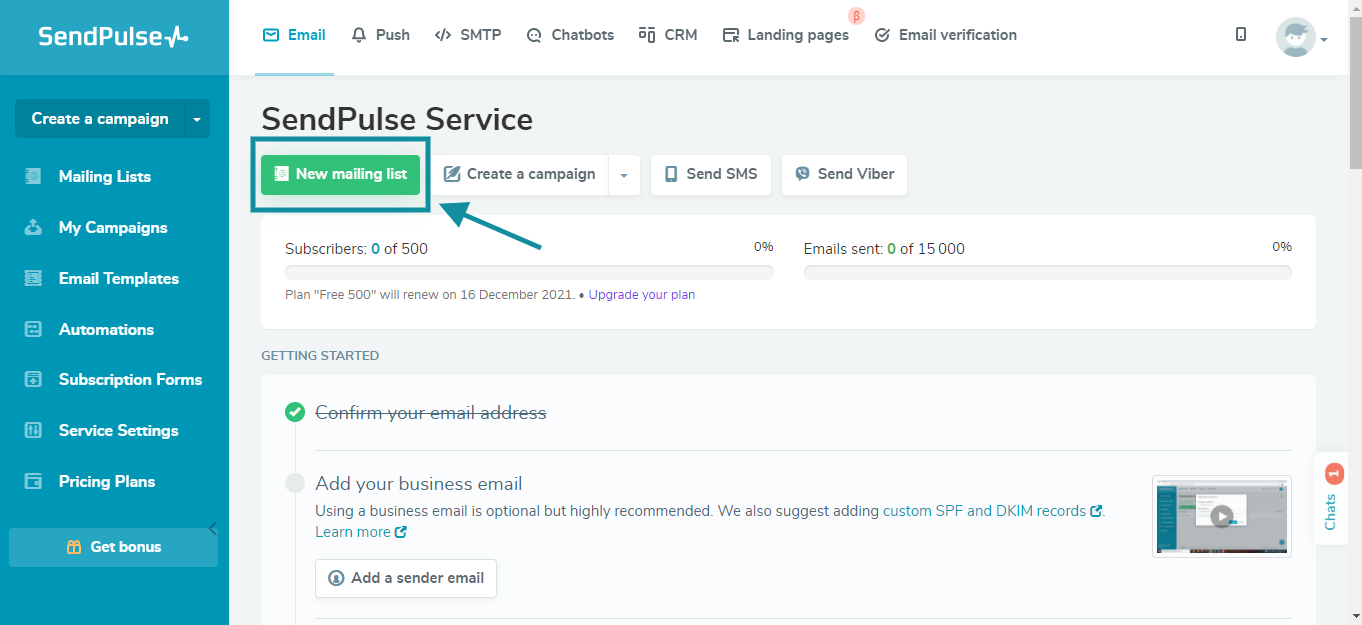
The second step is to prepare a flow of four emails. SendPulse allows you to design your email from scratch or choose one of the existing free email templates. To create an automated email flow, go to “Automations” and click “Create new automation.”
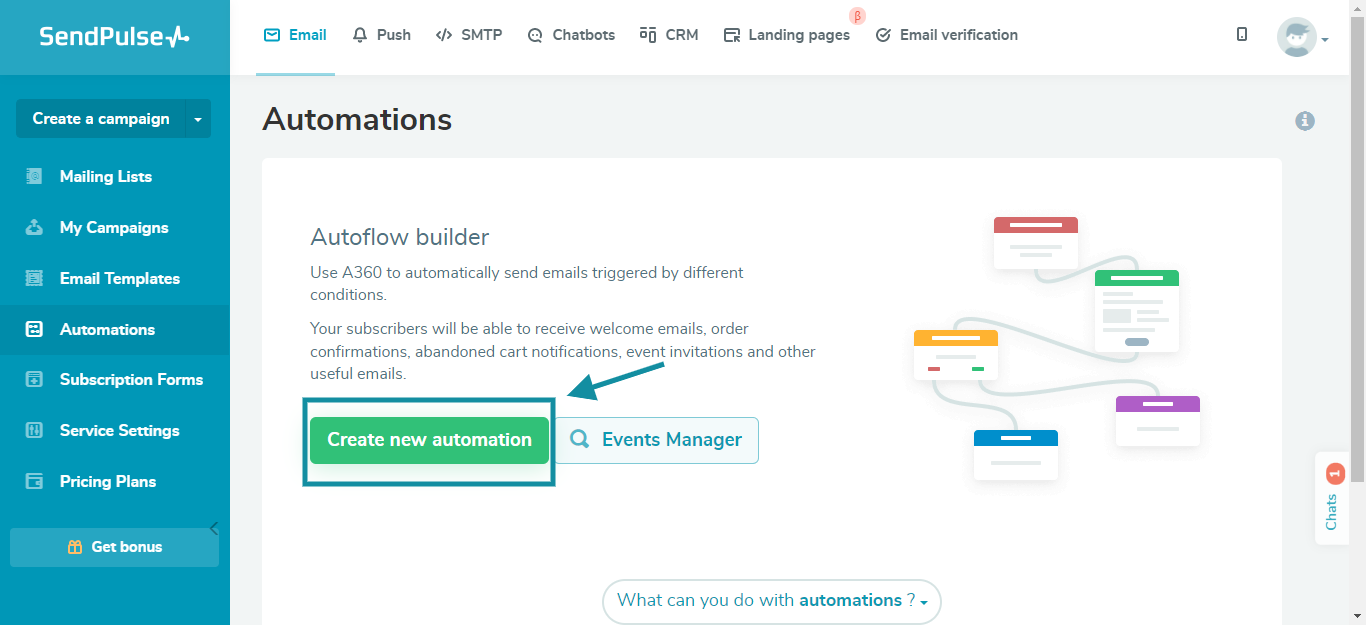
Then, type in your automation name and select your sender email address and name and unsubscribe form language. Don’t forget to save the changes.
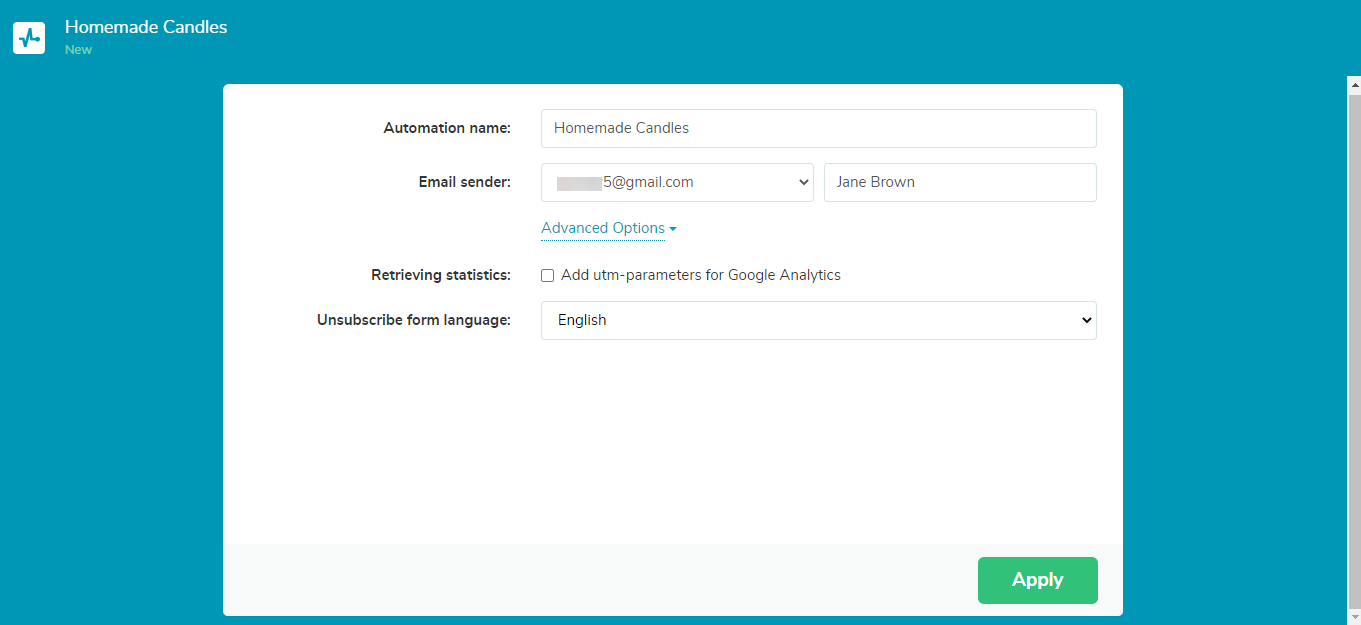
Once you click “Apply,” you’ll be redirected to the flow editor. Here, you can create an email flow and develop chatbots for different social media platforms.
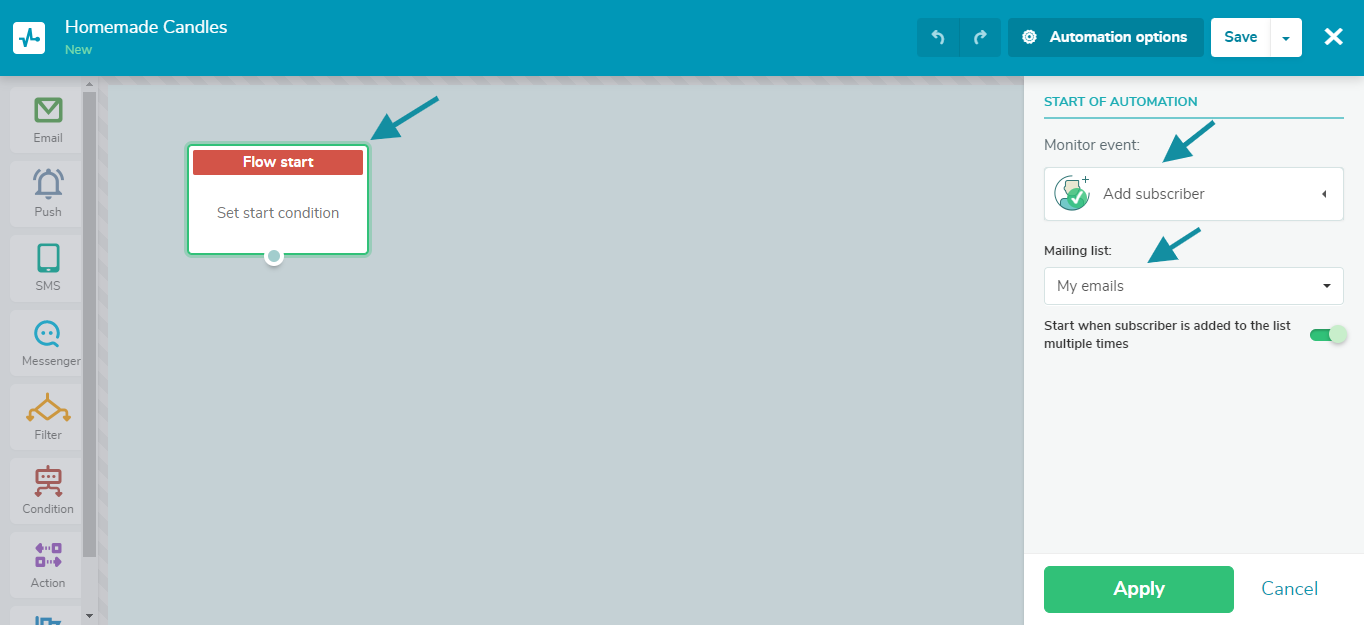
To send a post-registration email to subscribers automatically, set up your flow start. Click the “Flow start” element and then select “Add subscriber” in the Settings and a mailing list for this particular email campaign.
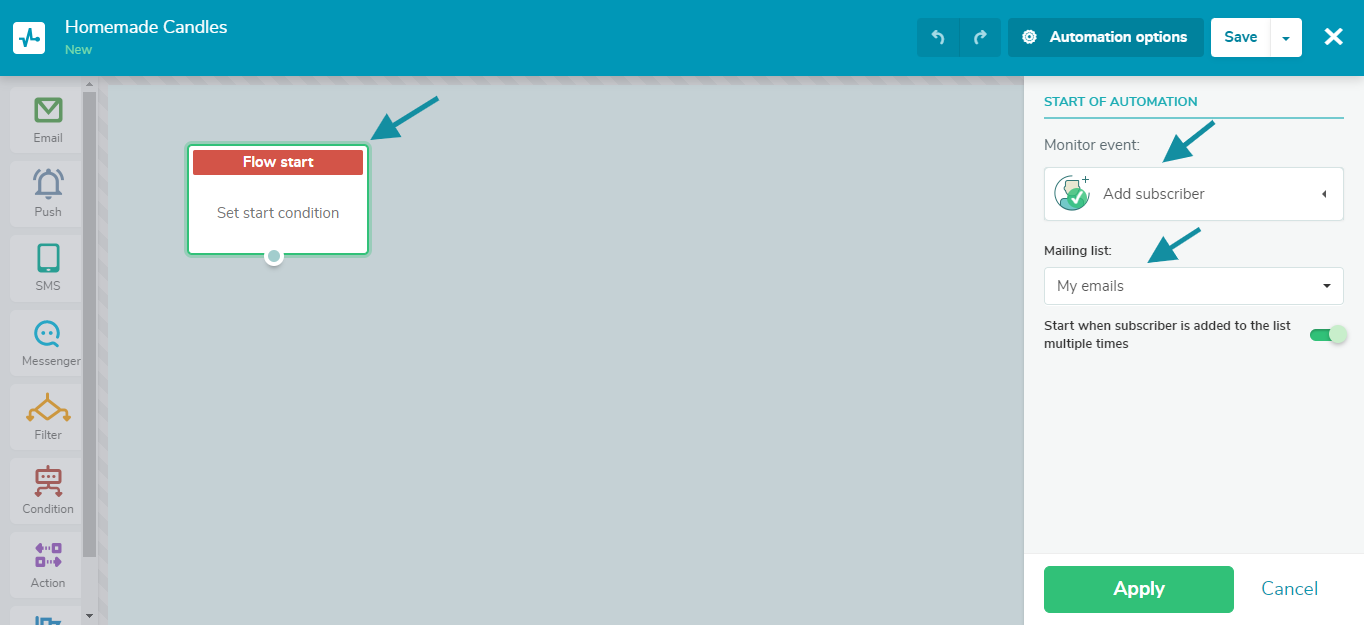
Now you need to drag the “Email” element and connect it to the “Flow start” element. Afterward, you’ll need to manage the send-out. Select “Right away,” add your email subject line and preheader, and select the necessary email template. Edit the template to your liking. It will be the first email your subscribers receive.
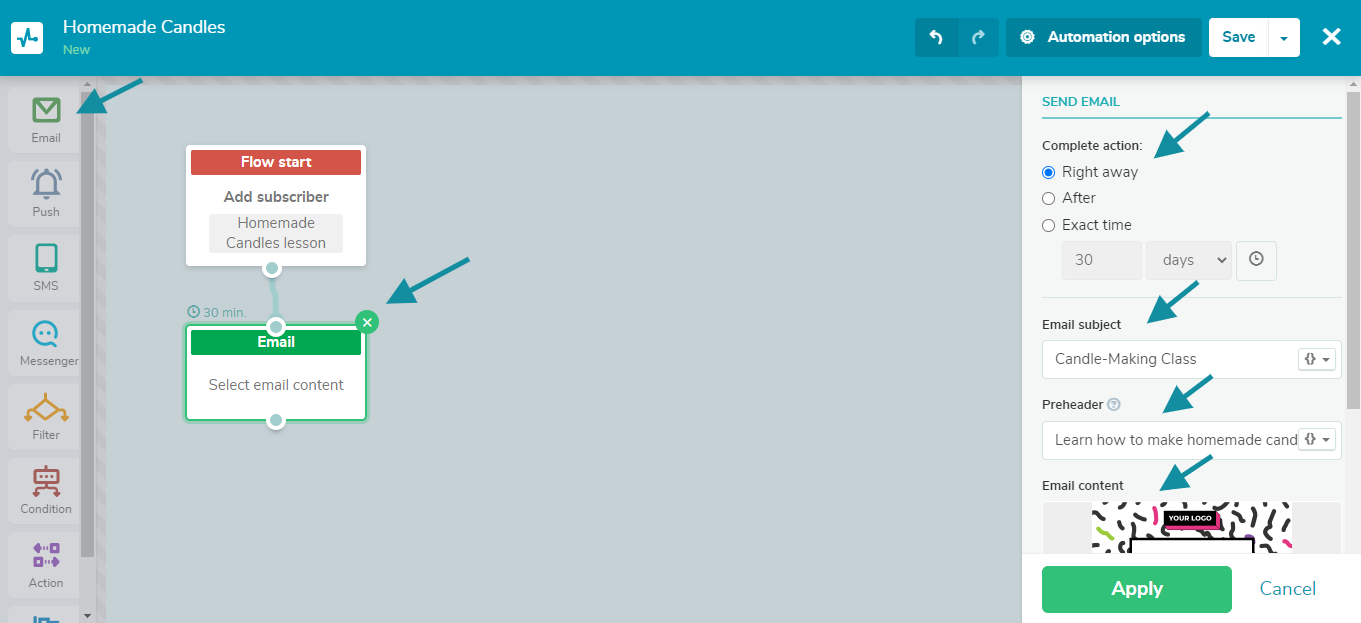
In the second email, you can talk about the agenda and teacher in more detail. The third email should remind your participants about the upcoming candle-making class and offer free useful materials for everyone who joins the workshop.
Once the workshop is over, ask your participants about their experience in the last email. Invite them to do it on Facebook Messenger. Once they answer the questions, they’ll have a 20% discount for the next workshop.
The number of emails you send depends on the event and strategy. The primary aim is to hook more people, provide a consistent experience, and encourage them to join.
Create a chatbot
With SendPulse, you can set up Telegram, WhatsApp, Instagram, and Facebook Messenger chatbots. So let’s take advantage of this feature and create a chatbot for your candle-making class. This chatbot will help you gather feedback from your participants and grant them a 20% discount for the upcoming scented soy candles workshop.
Go to the “Chatbots” tab. Click “Manage bots” and then “Sign in with Facebook.”
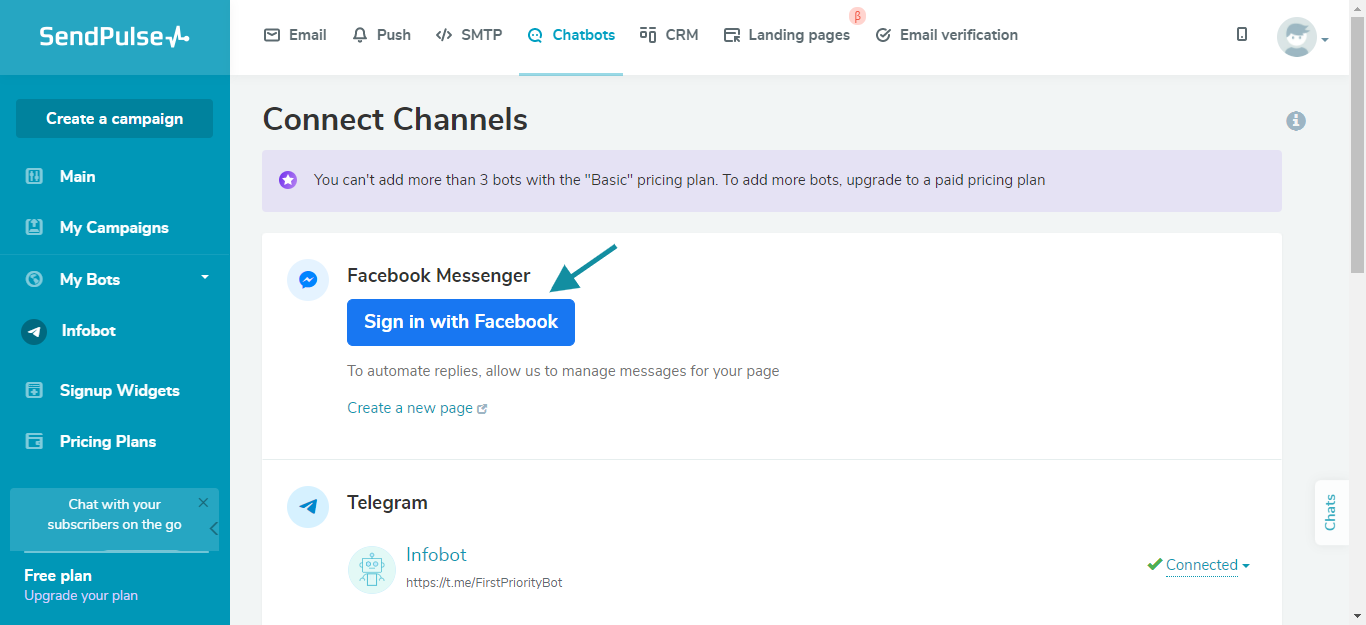
Connect your page and subscribe to your chatbot.
To send a message to users right after they subscribe, click “Create a new trigger” and select the “After subscription” trigger type. Save the changes by clicking “Add.”
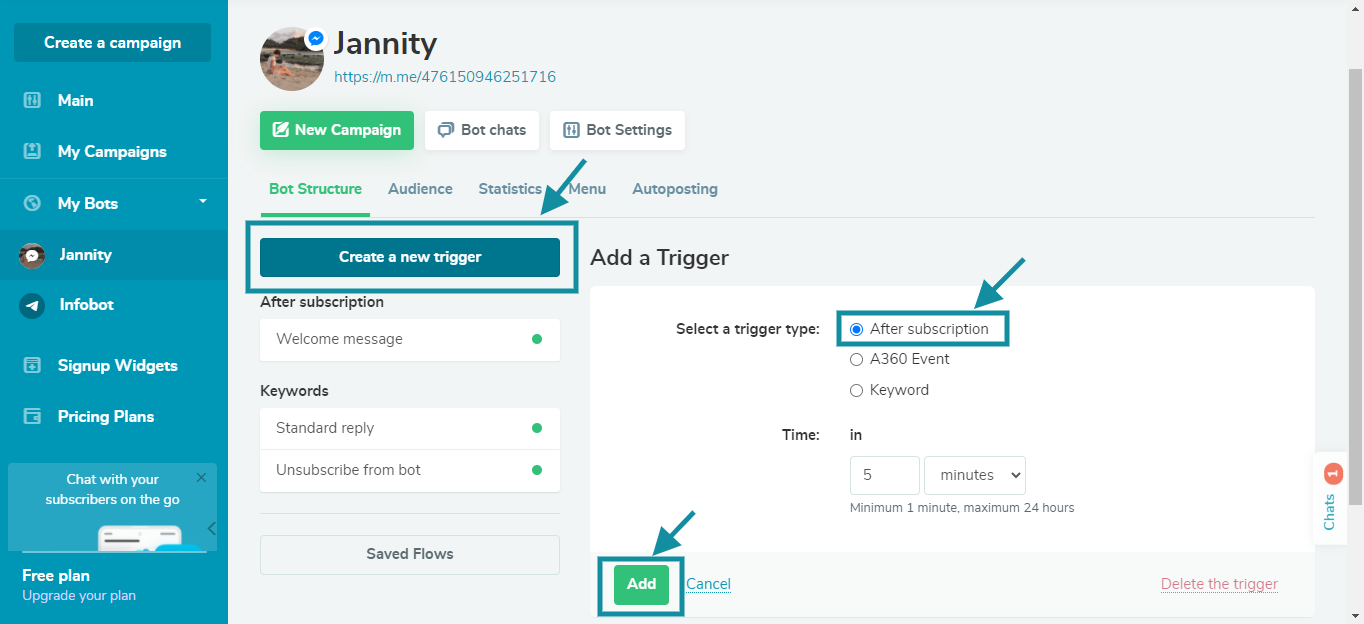
Now let’s create a message flow. It will help collect feedback from participants and provide them with a 20% discount for your next workshop. Once you add a trigger, click the “Create a flow” button.
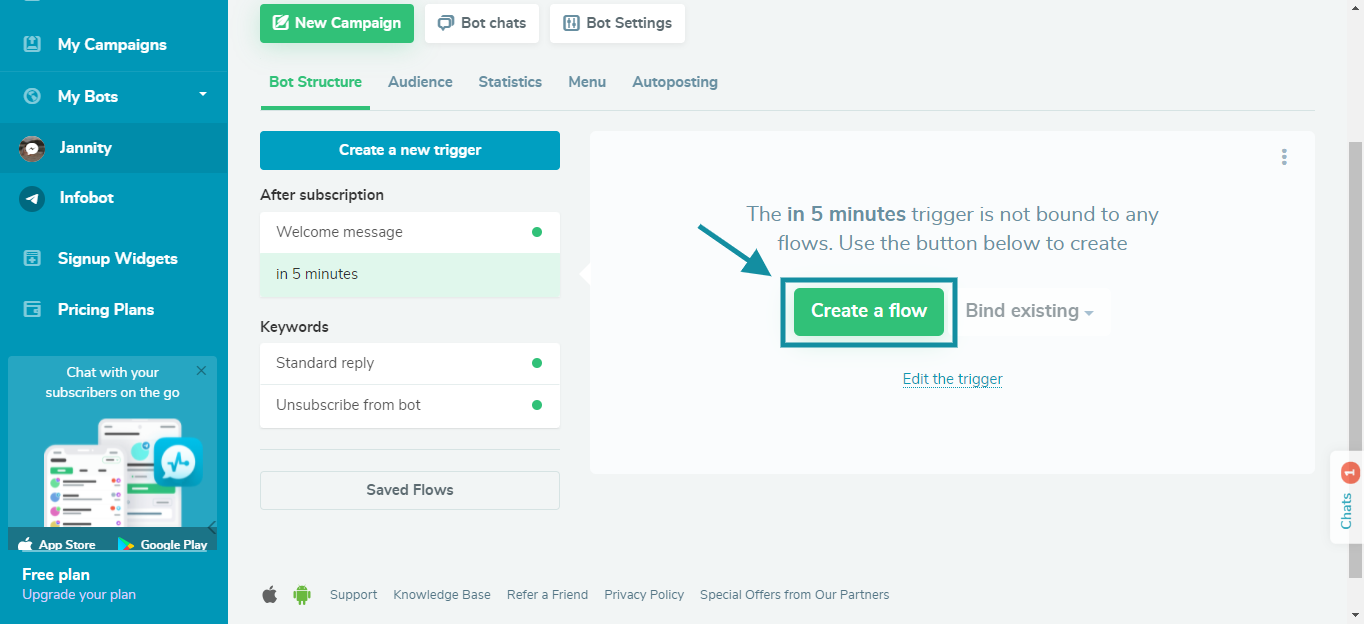
Use chatbot builder elements to build a flow of messages you want to send to your participants. You can easily add chatbot messages with quick answers.
Below, you can see a flow of messages from the candle-making workshop team asking participants about their experience in Facebook Messenger. In the chatbot, you ask participants whether they enjoyed the event and would like to participate in the next workshop. People can answer using the “yes” and “no” quick answers. Once you have all the necessary information, grant your participants a 20% discount on the next workshop.
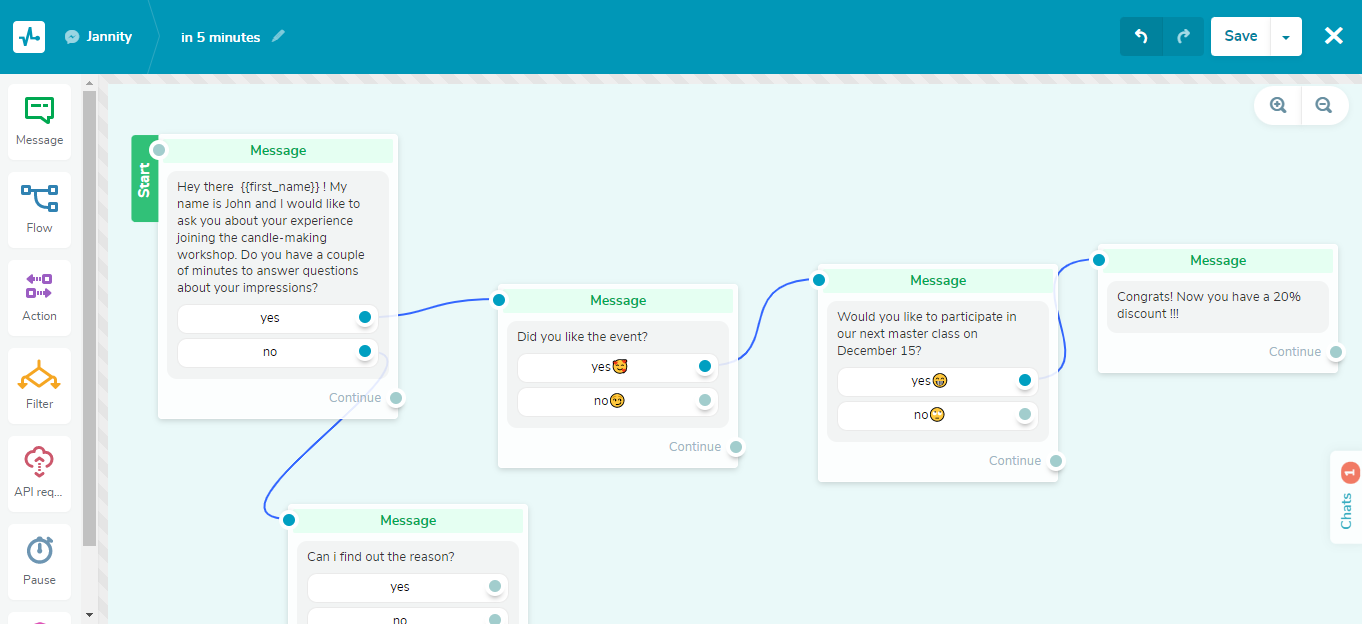
After you finish, check if everything works properly. Now you can move on to creating your landing page.
Landing page
To design a landing page, go to the “Landing pages” tab and click “Create a website” and then “Mini page.”
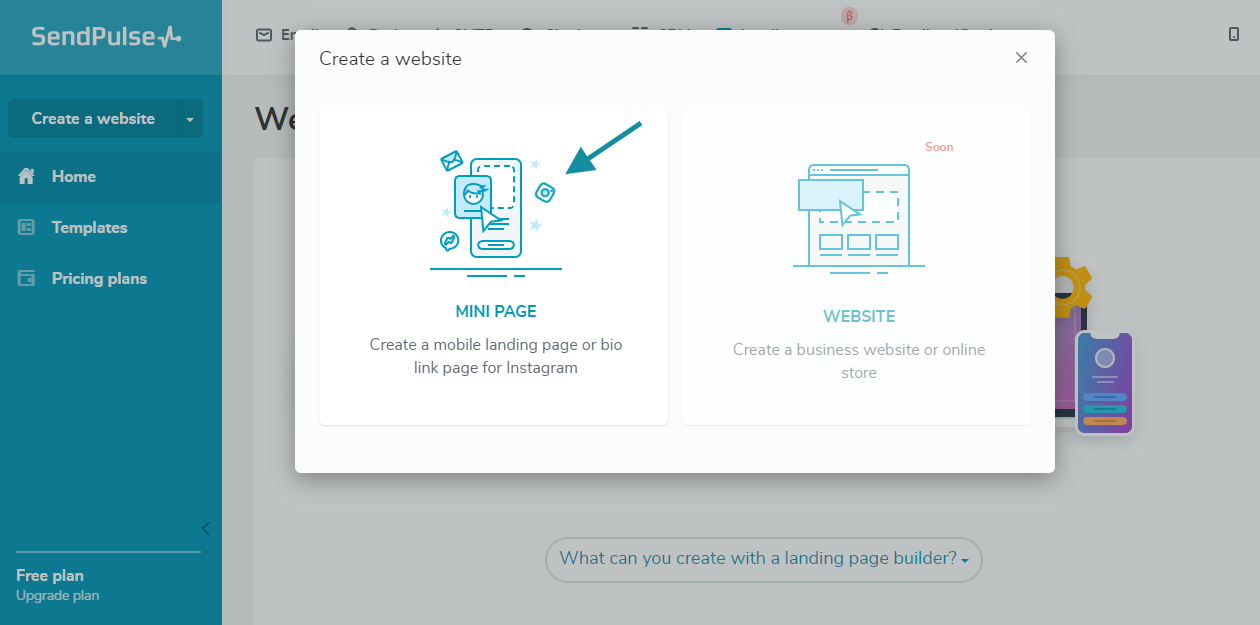
You can create a landing page from scratch or use the professional templates available. Let’s choose a pre-made one for your candle-making workshop and edit it a little — now we have a sharp-looking landing page.
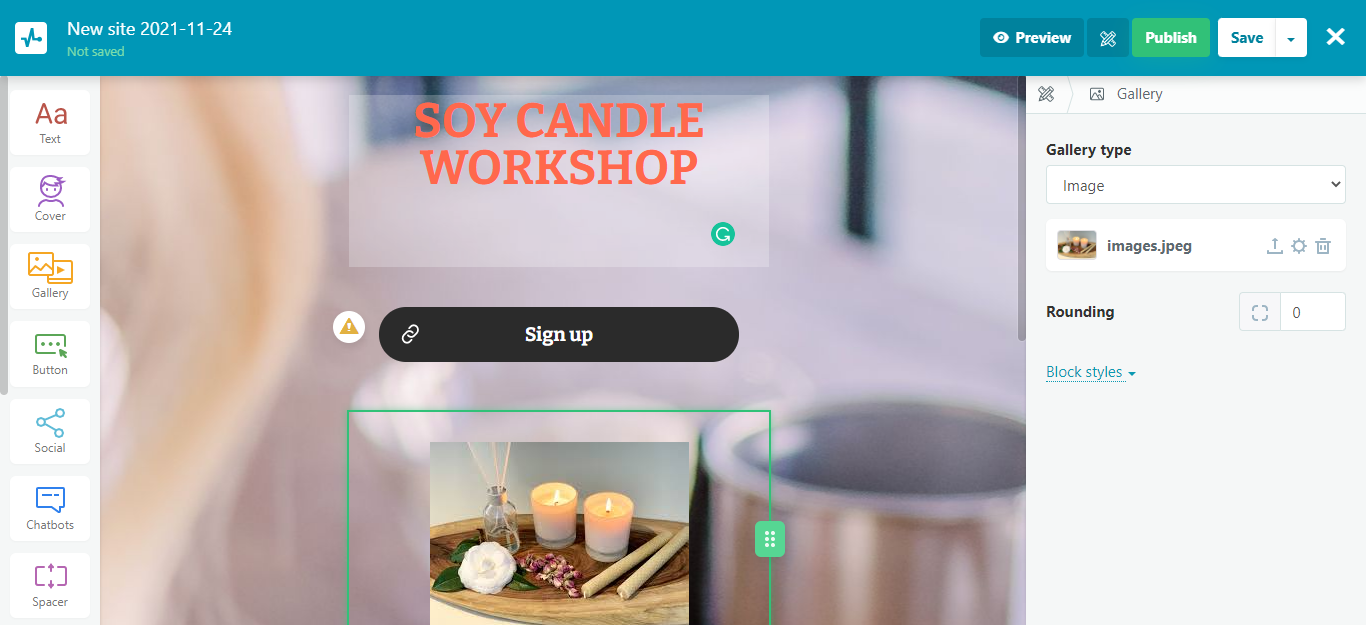
Paid Instagram ads
To get started with ads on Instagram, go to the “Advertising on Instagram” website and click “Create an Ad.”
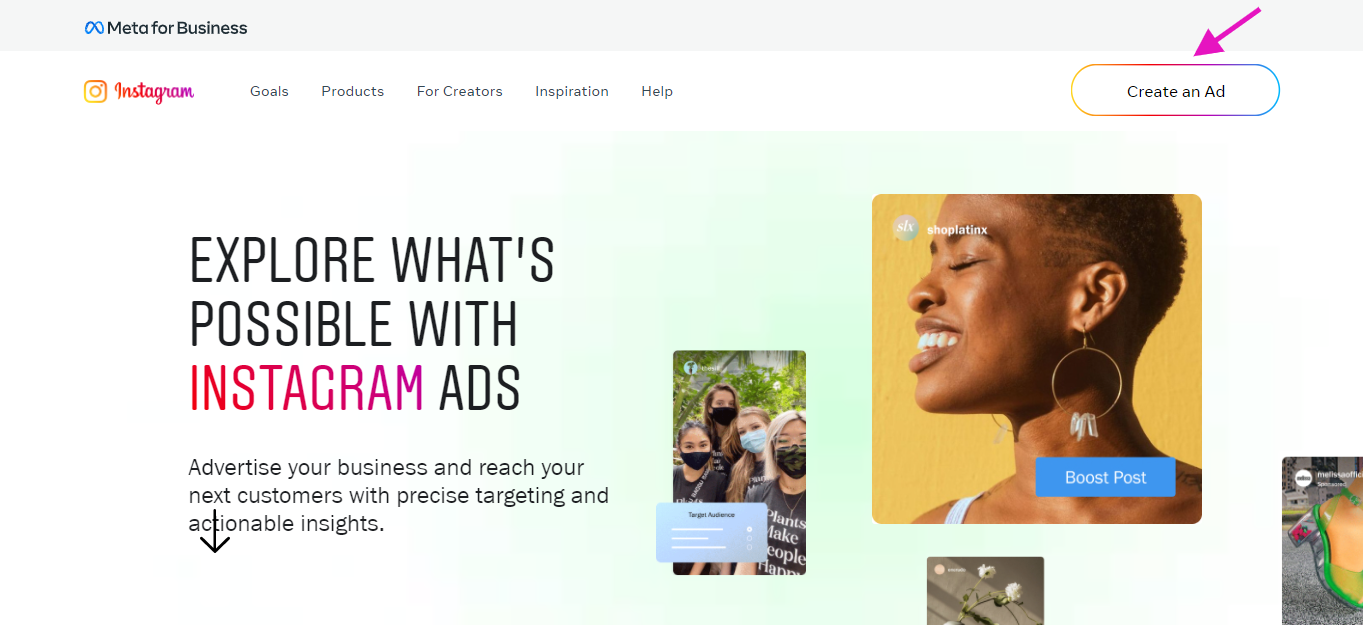
Once you click the button, you’ll be redirected to Facebook Ads Manager. After you read the non-discrimination policy, click “I Accept.”
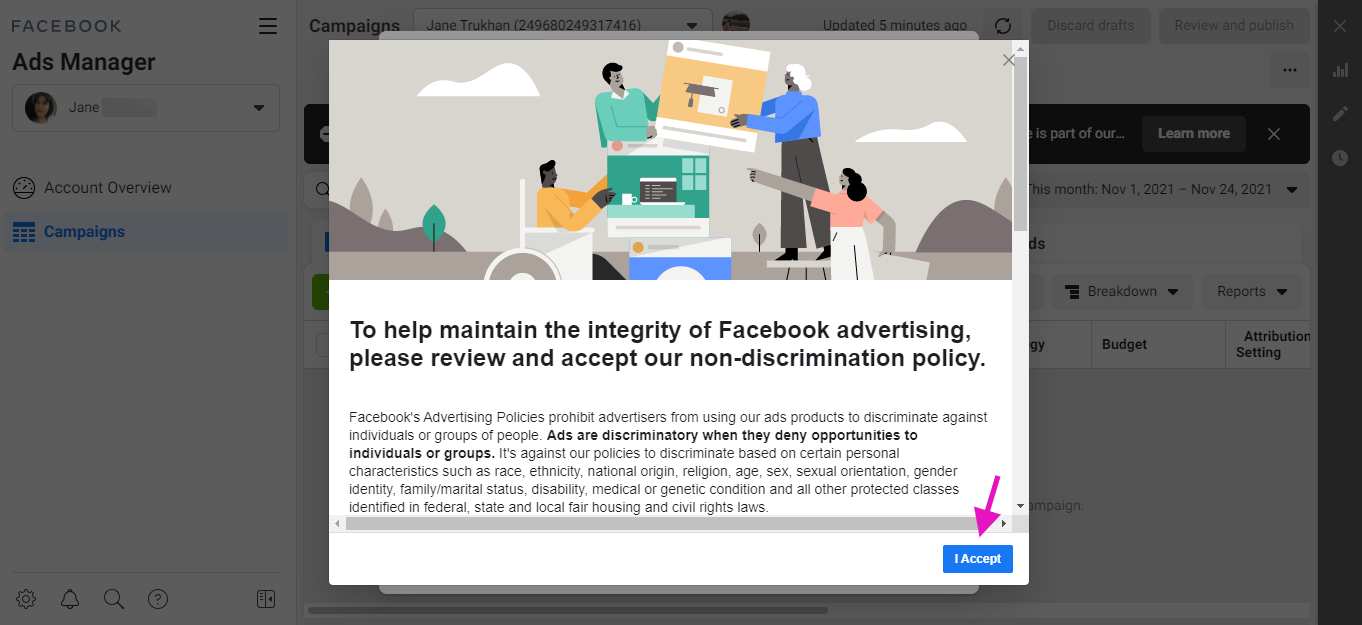
The next step is to select the objective of your future campaign.
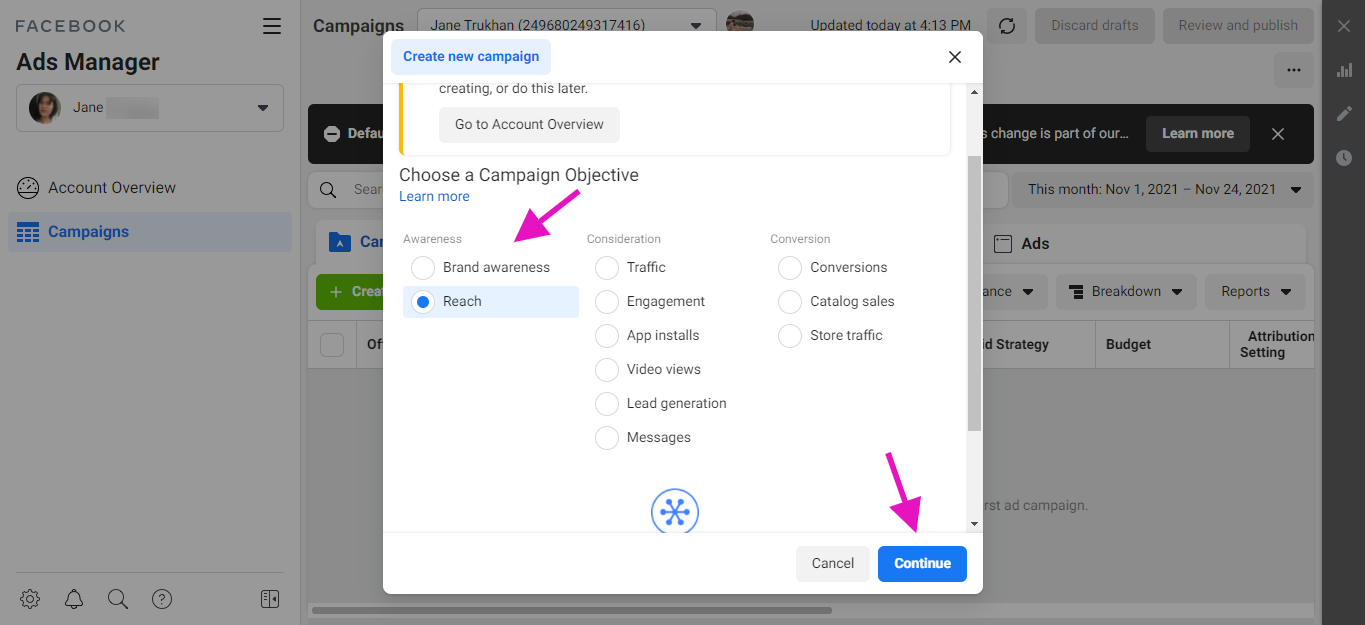
Fill in your campaign name, select special ad categories, and proceed to the next step after clicking “Next.”
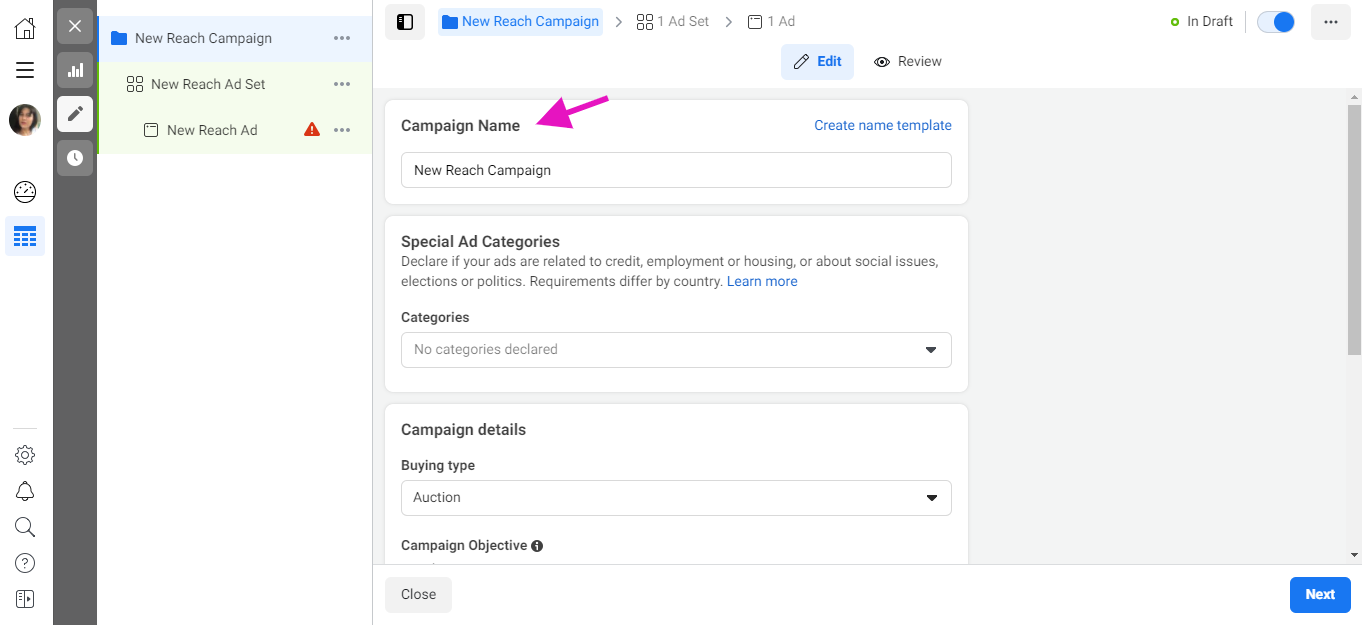
The next step is to set up the budget, audience, destination, and duration of your ad.
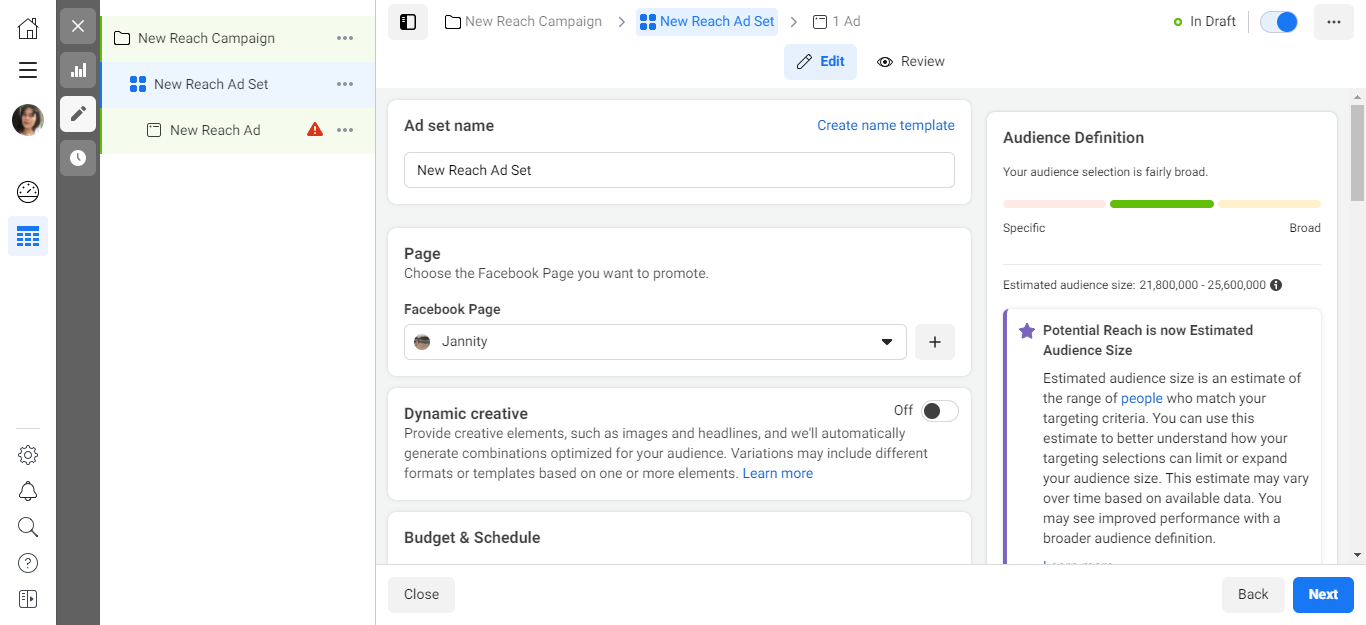
Type in your ad name and select an identity and format. Once everything is ready, publish your sponsored ad by clicking “Publish.”
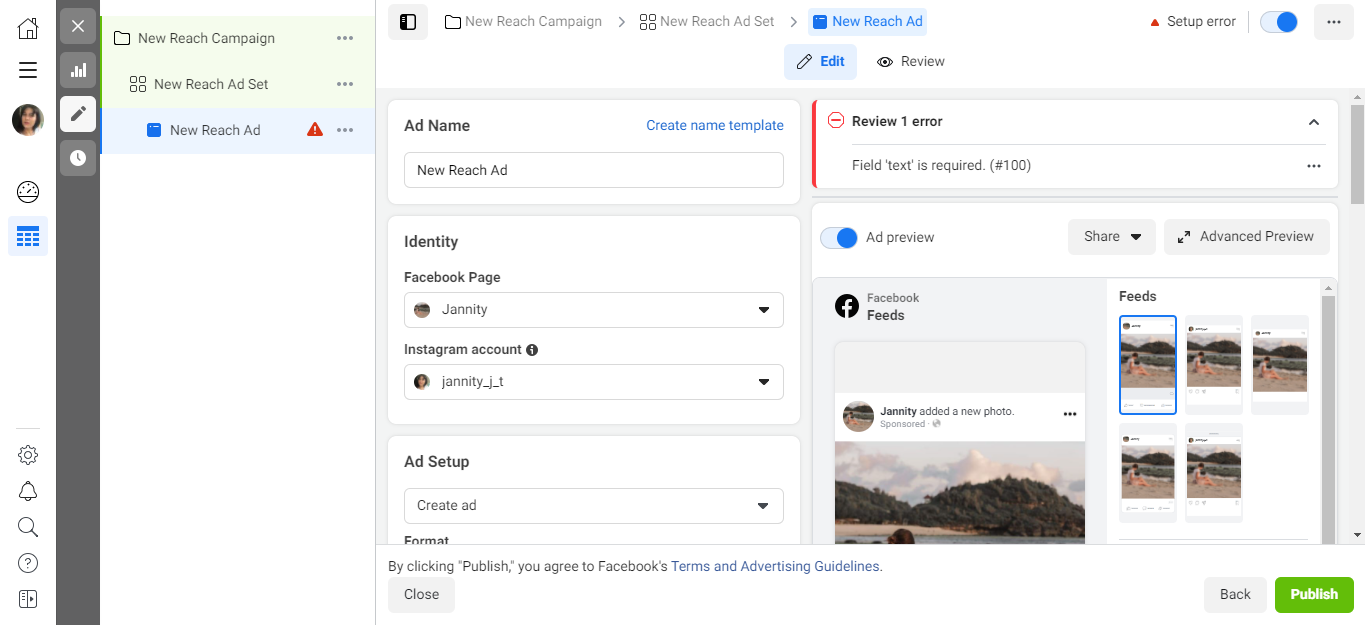
When your ad is approved, it will be visible to your subscribers and leads.
Now that you know how to create an omnichannel strategy, let’s take a closer look at how well-established companies launch their omnichannel marketing campaigns.
Examples of Omnichannel Marketing Campaigns
There are many amazing examples of omnichannel brands that provide consumers with the best experience. We’ll review different companies’ campaigns to see how the strategy works. So, let’s grab some inspiration.
Starbucks Rewards
The famous coffeehouse chain invites its customers to make use of its app. Since people now use mostly their phones to order something, the brand created a mobile app with multiple features. Customers can pre-order and pay at certain locations.
You can pay for your coffee with a credit card, cash, or a special Starbucks Card. This way, you no longer need to wait in a long queue after a hard day at work just to get a cup of your favorite coffee. Customers can order in advance and enjoy their evening with coffee. Moreover, they can even be rewarded for choosing the brand’s beverages.
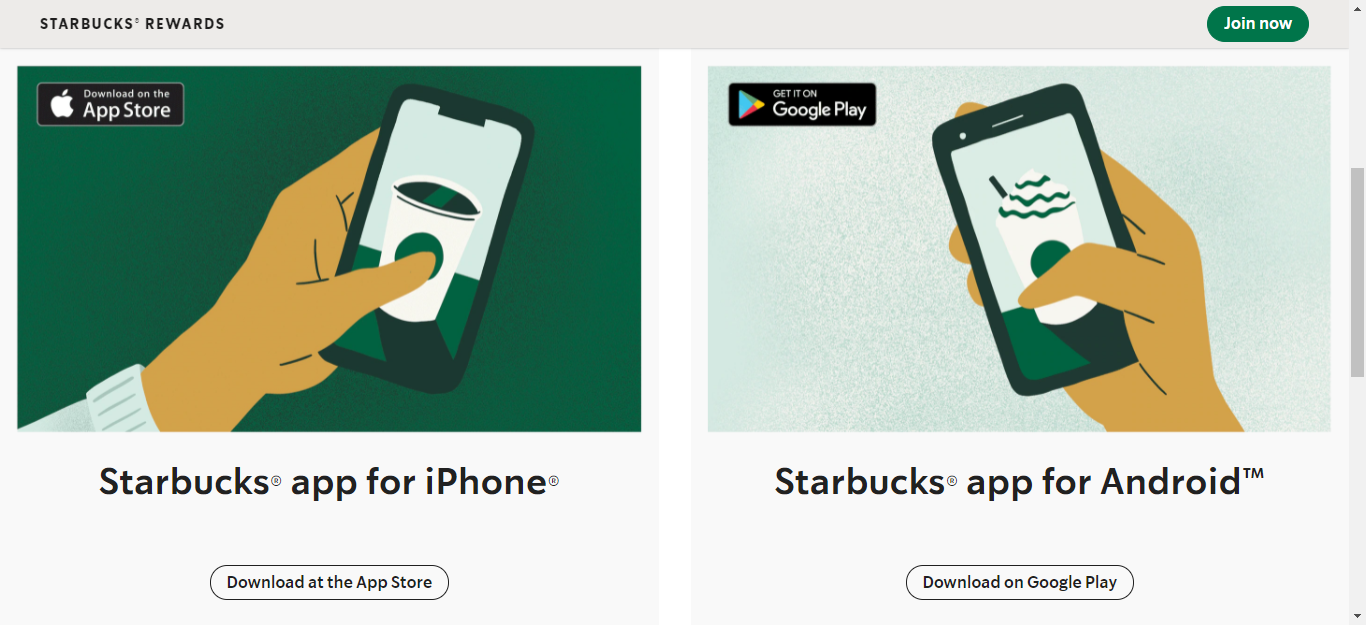
Amazon
Amazon synchronizes customers’ carts in the app and website if they are signed in and offers support using clients’ preferred communication channels. Amazon Prime members experience convenience when shopping with Amazon, as they can use any medium to access the benefits of this membership.
Spotify
Spotify isn’t inferior to Amazon in its user experience. The brand has its own approach to fulfilling listeners’ needs and ensuring the convenience of using the streaming service on different devices. Since people can use a web app, a desktop app, and a mobile app to listen to their favorite songs, the service implements synchronization features. It means that a song a user listens to at the moment on a mobile device is also displayed on the desktop app version as well.
In a nutshell, you are the one to decide whether an omnichannel strategy is a good fit for your company. However, you should always remember that with personalized messages and a seamless user experience, you’ll always be one step ahead of your competitors and one step closer to your audience.
References:
- This article provides you with several reasons to implement an omnichannel strategy.
- In this article, you’ll find the definition of omnichannel marketing and why it is important.
- This article unveils the benefits of omnichannel marketing.
Last Updated: 22.03.2023

or